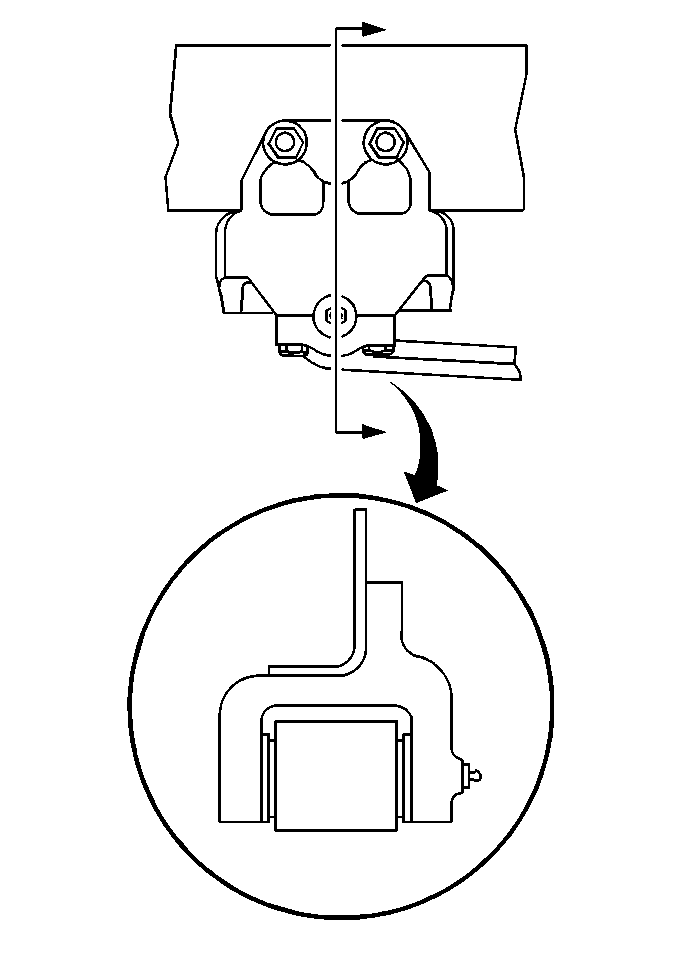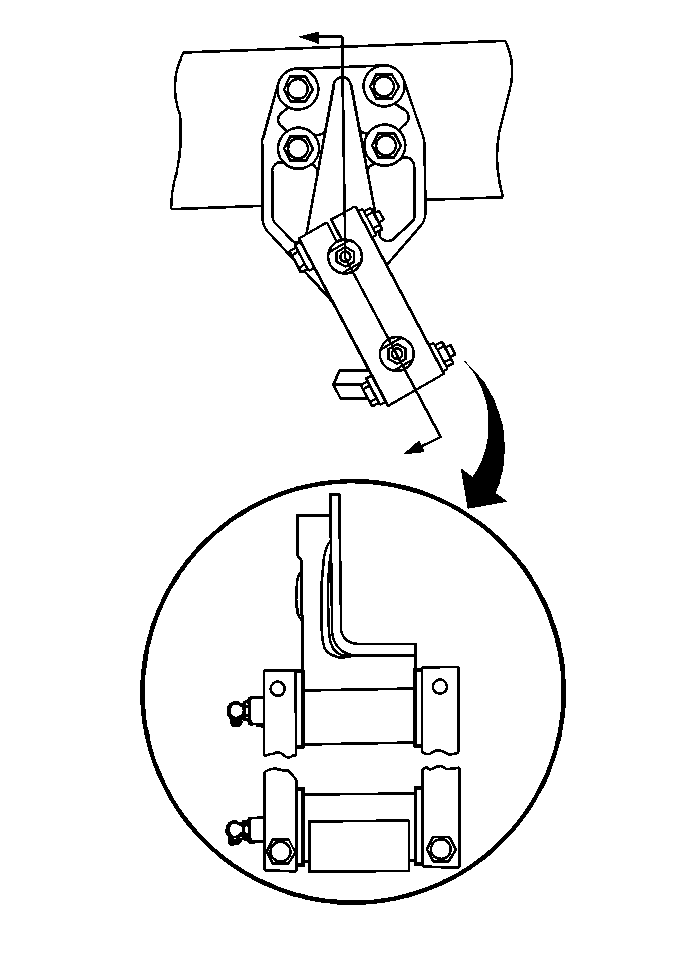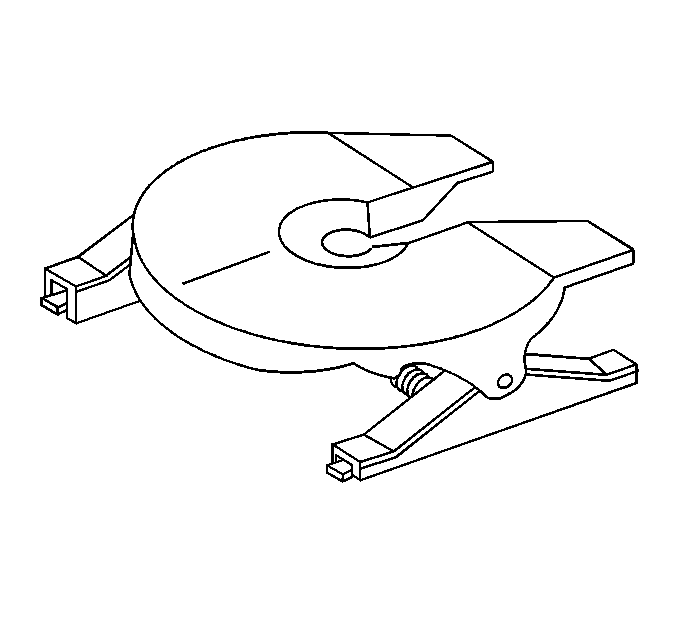Caution: Road test a vehicle under safe conditions and while obeying all traffic laws.
Do not attempt any maneuvers that could jeopardize vehicle control. Failure to adhere
to these precautions could lead to serious personal injury and vehicle damage.
Important: Before performing any road test, inspect the tires and wheels.
The following road test procedures are the most informative and the
most used:
| • | Tire and wheel inspection |
| • | Neutral coast-down test |
| • | Standing start acceleration test (launch shudder) |
These tests will help to pinpoint the vibration. Perform all of the
tests on a smooth, level road.
Slow Acceleration Test
This test will identify those conditions which are related to the engine-speed
or to the vehicle-speed. Additional tests may be necessary in order to determine
the exact cause of the vibration.
Caution: Road test a vehicle under safe conditions and while obeying all traffic laws.
Do not attempt any maneuvers that could jeopardize vehicle control. Failure to adhere
to these precautions could lead to serious personal injury and vehicle damage.
- On a smooth, level road, slowly accelerate up to highway
speed.
- Look for disturbances that match the customer's description.
- Observe the following readings where the disturbance occurs:
| • | The vehicle speed, km/h (mph) |
| • | The frequency (if possible) |
Now perform the neutral coast-down test and the downshift test.
Neutral Coast-Down Test
Caution: Road test a vehicle under safe conditions and while obeying all traffic laws.
Do not attempt any maneuvers that could jeopardize vehicle control. Failure to adhere
to these precautions could lead to serious personal injury and vehicle damage.
- On a smooth level road, accelerate to a speed slightly
higher than the speed at which the vibration occurs.
- Shift the vehicle into Neutral gear and coast down through the
vibration range.
Observe whether the vibration is present in
Neutral gear.
If the vibration still occurs in NEUTRAL gear, then the vibration is
definitely sensitive to vehicle-speed. At this point, the following components
have been eliminated as a cause of the vibration:
| • | The clutch disc (manual transmission) |
| • | The transmission flex plate (automatic transmission) |
Depending on the symptoms or the frequency, the repair will concentrate
on one of the following components:
| • | The tire and wheel assemblies |
| • | The transmission output shaft |
| • | The rear axle differential pinion |
| • | The rear drive axle or the rear drive axle shafts |
Downshift Test
Caution: Road test a vehicle under safe conditions and while obeying all traffic laws.
Do not attempt any maneuvers that could jeopardize vehicle control. Failure to adhere
to these precautions could lead to serious personal injury and vehicle damage.
- On a smooth, level road, accelerate to the speed at which
the complaint vibration occurs.
Observe the engine RPM.
- Decelerate and safely downshift to the next lower gear.
- Operate the vehicle at the previous engine RPM.
If the vibration returns at the same engine RPM, the following conditions
are the most probable causes of the vibration:
| • | The clutch disc (manual transmission) |
| • | The propeller shaft (located inside the driveline support assembly) |
| • | The transmission flex plate (automatic transmission) |
Repeat this test in still smaller gears, and in Neutral gear, in order
to confirm the results.
In some cases, a vibration may also be sensitive to torque or engine
load, as well as being related to a specific engine speed or vehicle speed.
These vibrations can be most difficult to diagnose, and require additional
testing. A systematic approach usually leads to isolating the problem.
Neutral Run-Up Test
This test is designed to identify vibrations which are related to the
speed of the engine. Use this test when the customer complains of vibration
at idle, or as a follow-up to the downshift test. This test probably
doesn't apply when the complaint is related to vehicle speed only
(appearing at the same vehicle speed regardless of the engine speed).
Caution: Road test a vehicle under safe conditions and while obeying all traffic laws.
Do not attempt any maneuvers that could jeopardize vehicle control. Failure to adhere
to these precautions could lead to serious personal injury and vehicle damage.
- Slowly increase the engine speed while looking for disturbances
that match the customer's complaint.
- Observe the engine speed (RPM) and the frequency (if possible)
where the vibration occurs.
Brake Torque Test
This test is designed to identify engine-related vibrations that were
not uncovered with the neutral run-up test. This test also works for vibrations
that are sensitive to the engine load or to the torque. This test
will probably not apply to vibrations which are related only to the
speed of the vehicle.
Caution: Road test a vehicle under safe conditions and while obeying all traffic laws.
Do not attempt any maneuvers that could jeopardize vehicle control. Failure to adhere
to these precautions could lead to serious personal injury and vehicle damage.
- Apply the parking brake.
- Block the front wheels.
- Step firmly on the brake pedal.
- Place the vehicle in Drive.
- Slowly increase the engine speed while looking for vibrations
that match the customer's description.
- Observe the engine speed (RPM) and the frequency (if possible)
at which the disturbance occurs.
- If necessary, place the vehicle in Reverse gear and repeat steps
5 and 6.
Steering Input Test
This test is intended to determine how much the wheel bearings and other
suspension components contribute to the vibration, especially a vibration
relating to noise, such as growl, grinding, and roaring.
Caution: Road test a vehicle under safe conditions and while obeying all traffic laws.
Do not attempt any maneuvers that could jeopardize vehicle control. Failure to adhere
to these precautions could lead to serious personal injury and vehicle damage.
- With the vehicle at the vibration speed (mph), drive
through slow sweeping turns, first in one direction and then in the
other direction.
- If the vibration gets worse or if the vibration goes away, inspect
the following components as possible causes of the vibration:
Standing Start Acceleration (Launch Shudder) Test
The purpose of this test is to duplicate a vibration called launch shudder.
In some cases, a powertrain mount or an exhaust ground-out may also be the
cause of the vibration, depending on the symptoms.
Caution: Road test a vehicle under safe conditions and while obeying all traffic laws.
Do not attempt any maneuvers that could jeopardize vehicle control. Failure to adhere
to these precautions could lead to serious personal injury and vehicle damage.
- With the vehicle at a complete stop and in gear, remove
your foot from the brake pedal.
- Accelerate to 48-64 km/h (30-40 mph)
while looking for vibrations that match the customer's description.
Other possible causes of launch shudder include the following conditions:
| • | Incorrect caster adjustment. Check the caster adjustment in front
suspension. |
| • | A damaged propeller shaft. |
| • | A ground-out engine/transmission mount. |
| • | Faulty exhaust hangers and mounts. |
Front Spring Shackle Inspection Test

The lateral gap between the front spring eyes and/or shackle and the
frame mounted spring hanger brackets should be measured with a feeler
gauge and not exceed 1.016 mm (0.040 in). Thrust washers
should be used to bring the lateral gap within tolerances.

Exceeding this clearance may result in wander, shake, or "shimmy"
and a slapping noise.

If a vehicle rides well on a smooth road surface and a jolt or severe
"slap-in-the back" occurs when passing over highway irregularities
inspect the following and correct as required:
| • | The shackle link position before raising the truck (1) |
| • | The shackle link position after raising the truck (2) |
Shackle Pin Inspection Test
Apply grease to the front spring pin and shackle pin lubrication fittings
(if equipped). As grease is applied, it should come out evenly at each end
of the pins. If the assemblies accept grease readily and grease comes
out each end of the assemblies, it is a good indicator they are actuating
properly and not seized.
Another method of inspecting the front spring pins to ensure that they
are not seized requires placing jacks under the frame rail at the front of
the vehicle and lifting the vehicle. If the spring pivots around
the front spring pin, and the shackle link position changes in relation
to the spring leaves on the bottom and mounting bracket on the top,
the assemblies are activating properly.
If the shackle link position does not change, replace the front spring
pin and shackle pins as required.
Fifth Wheel Inspection Test

Rock the fifth wheel mounting plate manually up and down to ensure
that it pivots freely in the fifth wheel support bracket. If the
fifth wheel mounting plate is seized or the pivot bushings are worn,
service as required.




